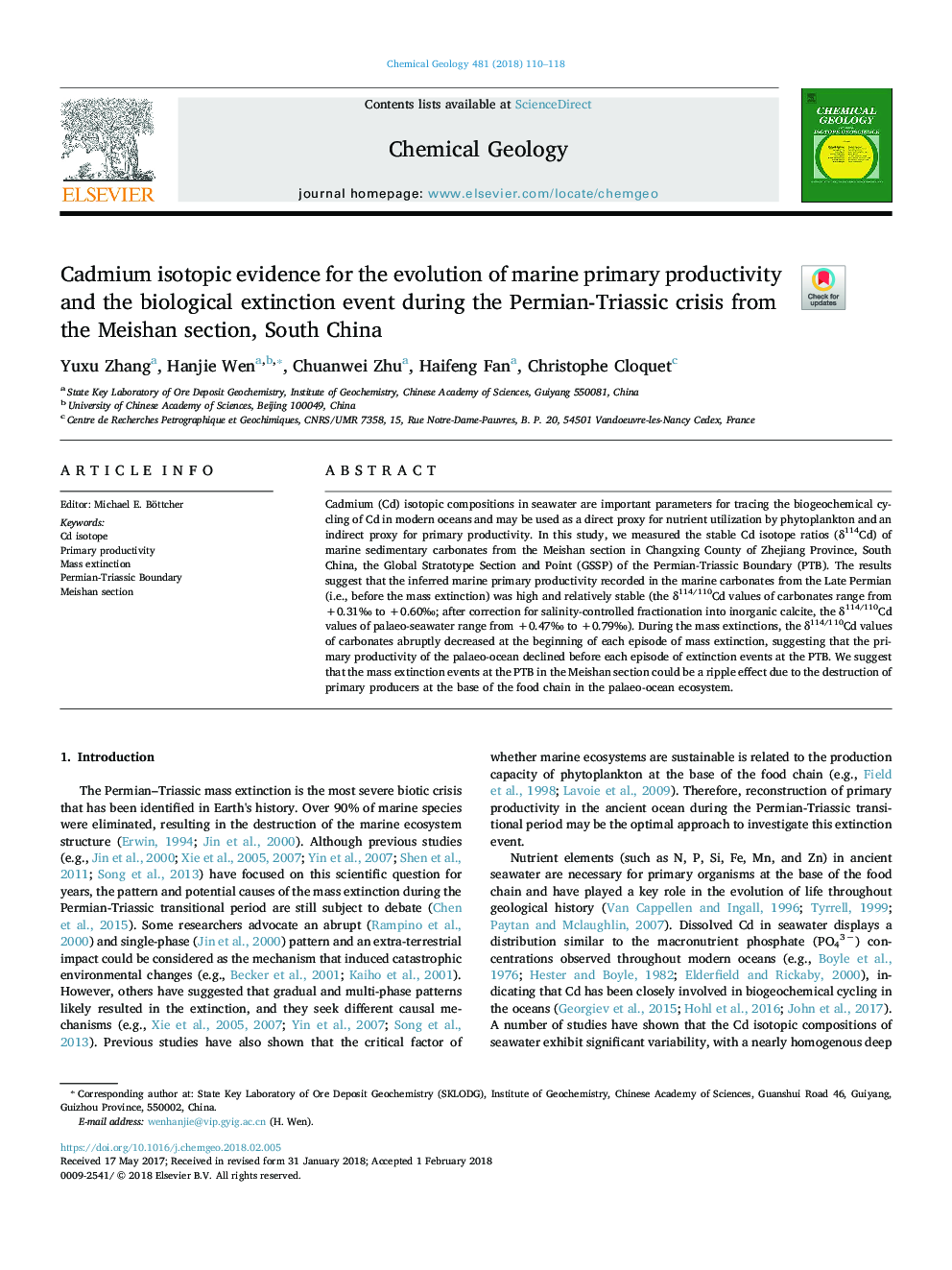| Article ID | Journal | Published Year | Pages | File Type |
|---|---|---|---|---|
| 8910337 | Chemical Geology | 2018 | 9 Pages |
Abstract
Cadmium (Cd) isotopic compositions in seawater are important parameters for tracing the biogeochemical cycling of Cd in modern oceans and may be used as a direct proxy for nutrient utilization by phytoplankton and an indirect proxy for primary productivity. In this study, we measured the stable Cd isotope ratios (δ114Cd) of marine sedimentary carbonates from the Meishan section in Changxing County of Zhejiang Province, South China, the Global Stratotype Section and Point (GSSP) of the Permian-Triassic Boundary (PTB). The results suggest that the inferred marine primary productivity recorded in the marine carbonates from the Late Permian (i.e., before the mass extinction) was high and relatively stable (the δ114/110Cd values of carbonates range from +0.31â° to +0.60â°; after correction for salinity-controlled fractionation into inorganic calcite, the δ114/110Cd values of palaeo-seawater range from +0.47â° to +0.79â°). During the mass extinctions, the δ114/110Cd values of carbonates abruptly decreased at the beginning of each episode of mass extinction, suggesting that the primary productivity of the palaeo-ocean declined before each episode of extinction events at the PTB. We suggest that the mass extinction events at the PTB in the Meishan section could be a ripple effect due to the destruction of primary producers at the base of the food chain in the palaeo-ocean ecosystem.
Related Topics
Physical Sciences and Engineering
Earth and Planetary Sciences
Geochemistry and Petrology
Authors
Yuxu Zhang, Hanjie Wen, Chuanwei Zhu, Haifeng Fan, Christophe Cloquet,
